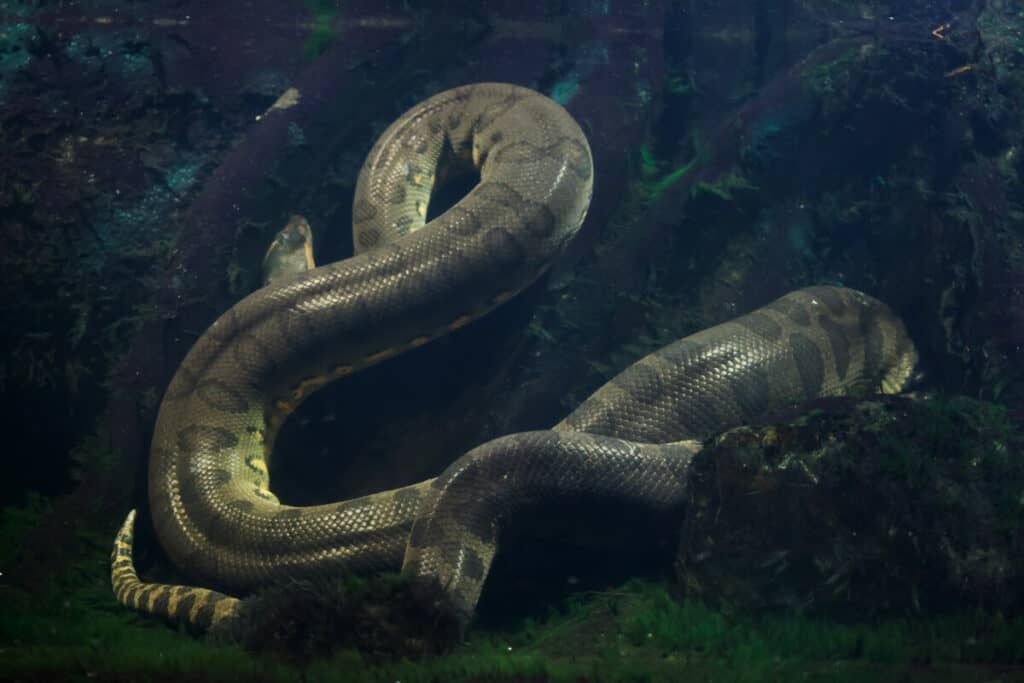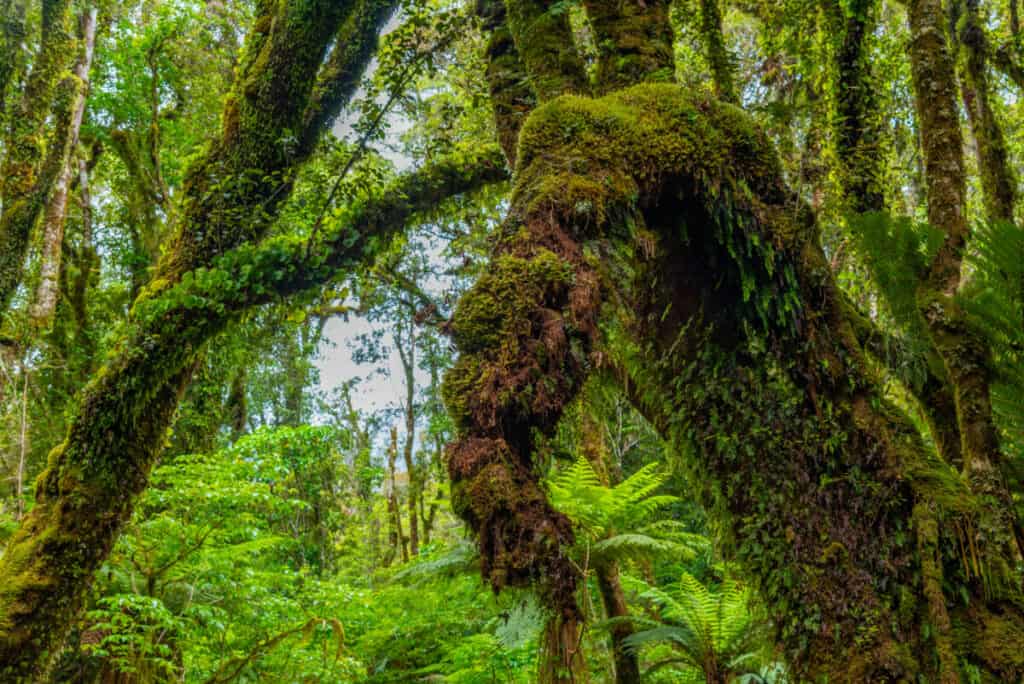
Giant snakes are pretty cool. On the other hand for some people a giant snake like an anaconda is their worst nightmare. Often large snakes are hunted down because of fear or to protect their livestock. Which might make you wonder, are anacondas endangered?
The species of snake known as anaconda is not yet endangered. As a matter of fact, they have not yet been evaluated or given their own conservation status. Although they are not classified as endangered, they still need protection. They can be protected through the practice of ecotourism.
Through a good amount of research, I have found that the anaconda — specifically, the green anaconda — is still thriving in the many rainforests of the world. This article will provide the information needed to understand what the anaconda is to the human race and how you can prevent them from becoming endangered or even extinct.
What is an Anaconda?
The anaconda is a species of snake that reaches lengths of over thirty feet with a head diameter of about a full foot. They are among the largest snake species and even reptiles on planet Earth weighing in at over five hundred and fifty pounds when fully grown.
The green anaconda typically lives in the more northern regions of South America where rainforests tend to be. Due to its incredible size, there are not very many predators that the anaconda has to look out for — at least the females.
The males and younger snakes do need to be on the watch for other apex predators such as jaguars and other big cats so they can strike first. So really, the only real threat to the anaconda is jaguars and humans. Thankfully, this will make it less likely for the anaconda to become endangered.
That said, we still need to make sure we do what we can to keep their habit healthy and ensure the anaconda does not become endangered.
Physical Features and Habitat

The green anaconda is, of course, primarily the color green with dark spots shaped like ovals running along their sides and back. The underbelly is a bright yellow that contrasts with the rest of their scaled skin. This keeps them camouflaged in the dense rainforests where they reside.
They are extensively accustomed to the aquatic life, swimming in the shallow waters that slowly move through the rivers and streams of Columbia, Brazil, Venezuela, Peru, Ecuador, Bolivia, Paraguay, and a number of other countries in South America.
Anacondas also tend to slither along dense and larger vegetation, often up in the trees. They communicate using their chemosensory abilities, using their tongues to detect chemical signals from other animals.
How Anacondas Hunt
Despite being the largest snakes in the world, anacondas do not have glands that produce venom or fangs that inject them into their prey. Rather, they use their strong jaws to capture their victims and the strong muscles along their bodies to constrict and suffocate their prey, making it easier for them to swallow whole and digest.
The typical prey of the green anaconda consists of a wide variety of fish, birds, and mammals that dwell in the rainforests of South America. When fully grown, these giants will hunt for large birds, deer, and capybara. The females even have a tendency to go full cannibal and eat other male anacondas during the mating season — and we humans think we have it rough in the dating world.
The Anaconda and The Man
To put it bluntly, a large anaconda could swallow a full-grown man whole if it wanted to. However, they do not tend to inhabit areas that are near wherever people may abide. In fact, instances where an anaconda attacks a human are exceptionally rare.
These large, limbless reptiles will not go out of their way to find a human being to snack on. Still, do be cautious and attentive when traversing the environments where these beasts are known to live. Always travel with a known professional when doing so.
Although they mostly avoid contact with humans, several species of anaconda throughout the world are still hunted. This because of the frightening possibilities of an attack and for the protection of livestock.
These snakes are also hunted for their skin and captured for trade as pets. Although these practices are regulated, there are still acts of poaching.
Unfortunately, illegal trade of anacondas are being conducted throughout the globe. Not only that but the habitats of these creatures are also being destroyed through the practice of deforestation.
Although anacondas are not considered endangered, there is still the possibility of them making it onto that list.
Protecting the Anaconda From Becoming Endangered
All hope is not lost, however. There are ways in which YOU can help protect the anaconda from becoming extinct like the dinosaurs of millennia past. The best ways in which people can help in protecting the anaconda are by practicing ecotourism and simply spreading awareness.
You can practice ecotourism by advocating for the environment wherever you travel whether it be for business or vacation. Find ways to support and participate in events and organizations that specialize in protecting the environment. Also, be sure to avoid purchasing products made using the body parts of the anaconda.
Doing these simple things among taking other actions will raise awareness and allow others to do the same through invitation. The best, easiest, and most simple way to protect the anaconda is to share articles like these.
All animals deserve to be protected against endangerment and large snakes are no exception. Though anacondas are not in threat of endangerment now we need to do what we can preserve their habitat.
Fortunately, steps are currently being taken to ensure the preservation and overall survival of the anaconda. The average green anaconda lives for around ten years when in the wild.
While in a specialized enclosure such as the one at Smithsonian’s National Zoo and Conservation Biology Institute, the green anaconda has been known to live well beyond twenty years while under the care of humans.
